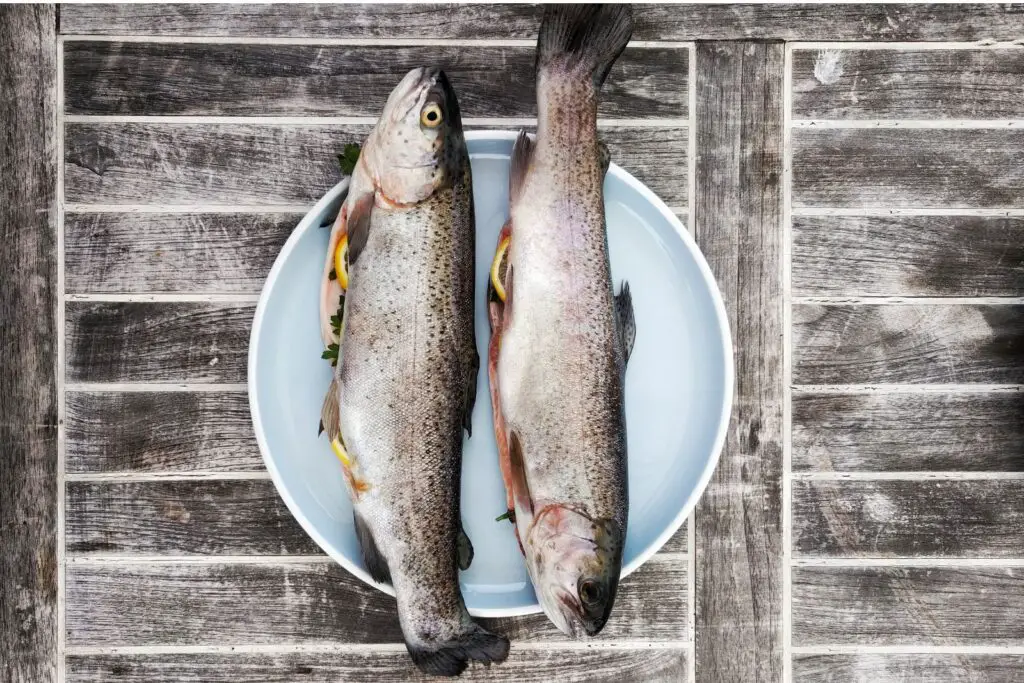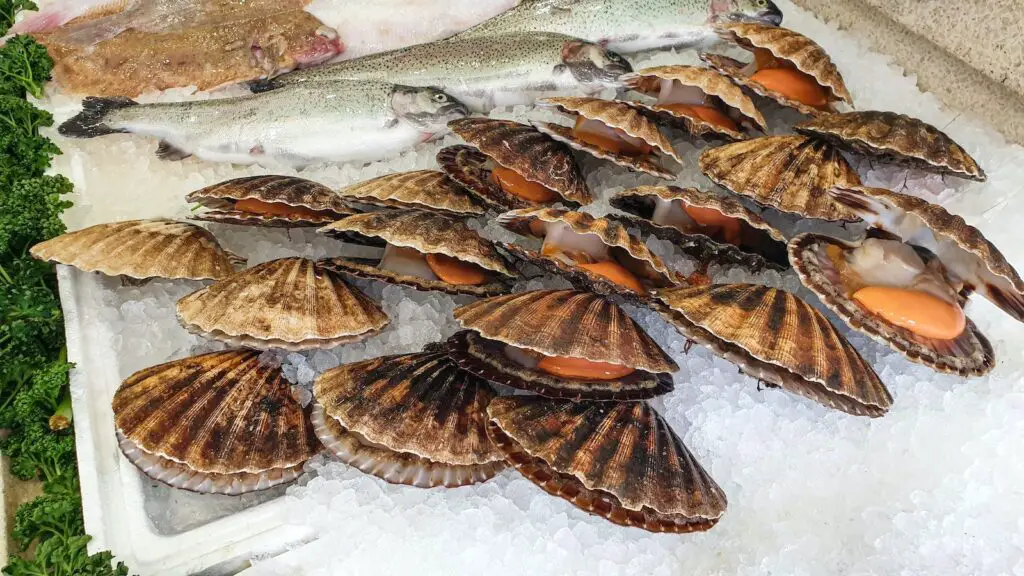
Smoked fish is a delicacy enjoyed by many for its rich, savory flavor and versatile use in various dishes. Whether you’ve caught some fresh fish and smoked it yourself or purchased smoked fish from a reliable source, freezing it properly can extend its shelf life and maintain its delicious taste. Freezing smoked fish requires a few simple steps to preserve its quality and ensure that you can savor its delightful taste even when it’s not readily available. In this article, we’ll guide you through the process of freezing smoked fish, so you can enjoy it at your convenience.
Here are simple steps on freezing smoked fish:
Step 1: Select the Right Smoked Fish
The first step in freezing smoked fish is crucial to ensuring the overall success of the process. When selecting the right smoked fish, you need to consider several important factors that will determine the fish’s overall quality and taste after freezing.
One of the primary considerations is freshness. Whether you’re smoking the fish yourself or purchasing it from a reputable source, always opt for fish that is as fresh as possible. Freshness plays a significant role in the final outcome because the quality of the fish before freezing will directly impact its taste and texture once thawed and prepared.
Next, pay attention to the smoking process. A well-smoked fish will have a balanced and enticing flavor, enhanced by the smoking method and the choice of wood used. The smoke should complement the natural taste of the fish rather than overpower it. Take the time to inquire about the smoking process or read product labels to ensure that the fish has been properly smoked.
Inspect the fish for any signs of spoilage or off odors. If the fish smells overly fishy, sour, or has an ammonia-like scent, it might indicate that it’s past its prime and not suitable for freezing. A fish in optimal condition should have a fresh, slightly salty, and smoky aroma.
Quality smoked fish will freeze better and retain its taste and texture during the freezing and thawing process. Freezing can sometimes alter the texture of foods, so starting with the best possible product will help minimize any negative effects.
Step 2: Cool the Smoked Fish
Properly cooling the smoked fish before freezing is a crucial step in the preservation process. When the fish is freshly smoked or recently purchased from a store, it may still retain some residual heat. Allowing it to cool completely before freezing is essential for maintaining the quality and safety of the fish during storage.
When warm or hot food items are placed in the freezer, they can raise the temperature of the surrounding environment. This sudden temperature increase can potentially lead to partial thawing of already frozen foods or even compromise the overall effectiveness of the freezer in maintaining a consistently low temperature. The result may be an increased risk of bacterial growth, freezer burn, and deterioration of food quality.
To prevent such issues, it’s essential to cool the smoked fish to room temperature first. You can do this by placing the smoked fish on a cooling rack or a clean, flat surface and letting it sit for some time. Avoid leaving the fish at room temperature for too long, as this could also promote bacterial growth. Generally, cooling the fish for 30 minutes to an hour should be sufficient.
During the cooling process, it’s a good idea to gently pat the surface of the smoked fish with a paper towel to remove any excess moisture. This step is particularly important if the fish was rinsed or washed before smoking, as excess moisture can lead to ice crystals forming during freezing, which may negatively impact the texture and taste of the fish.
Should I remove the skin and bones before freezing smoked fish?
It is a matter of personal preference. While some prefer to remove the skin and bones before freezing, others find that leaving them intact helps preserve the fish’s moisture and flavor during freezing. If you choose to remove them, do so before portioning and wrapping the smoked fish.
Step 3: Portion the Smoked Fish
Portioning the smoked fish before freezing is a practical and strategic step that can greatly enhance the convenience and overall quality of your frozen supply. By dividing the smoked fish into manageable serving sizes or meal portions, you set yourself up for a more efficient and enjoyable culinary experience in the future.
- Consider Your Usage Needs: Before portioning the smoked fish, think about how you plan to use it in your meals. Are you likely to use it as a standalone appetizer, in salads, as a pizza topping, or in pasta dishes? By understanding your usage needs, you can create portions that align with your typical recipes, making it easier to incorporate the smoked fish into your meals without any hassle.
- Reduce Food Waste: Smoked fish can be quite flavorful and nutrient-dense, but it’s not always something you’ll want to consume in large quantities at once. By dividing it into smaller portions, you reduce the likelihood of thawing more than you need, which could lead to food waste. Thawing only the necessary amount helps you manage your food inventory efficiently and minimizes the risk of leftovers going to waste.
- Maintain Quality: Each time you thaw and refreeze food, there’s a risk of diminishing its quality, including taste, texture, and nutritional value. By portioning the smoked fish into single-use servings, you can avoid the need to refreeze any leftovers. This ensures that every portion you thaw will be as fresh and delicious as the day you initially froze it.
- Convenient Meal Planning: Pre-portioned smoked fish makes meal planning and preparation a breeze. When you know the exact amount of smoked fish you have in each portion, you can easily incorporate it into your recipes without any guesswork. This saves time and effort when putting together your meals.
Step 4: Wrap the Smoked Fish Properly
Properly wrapping the smoked fish is essential for maintaining its quality, flavor, and texture during freezing. The right wrapping material creates a protective barrier that prevents freezer burn and helps preserve the fish’s natural taste and aroma. Here’s why it’s crucial to wrap the smoked fish correctly:
- Protection from Freezer Burn: Freezer burn occurs when the surface of the food is exposed to air, causing moisture to evaporate and leaving the food dehydrated and discolored. Wrapping the smoked fish with plastic wrap or aluminum foil provides a tight seal that prevents air from coming into contact with the fish, significantly reducing the risk of freezer burn.
- Preventing Odor Contamination: Smoked fish has a strong and distinct aroma that can easily transfer to other foods in the freezer if not properly wrapped. Using a suitable wrapping material ensures that the fish’s aroma remains contained, preventing it from permeating other items in the freezer.
- Individually Wrapped Portions: Wrapping each portion of smoked fish individually offers several benefits. First, it allows you to thaw only the amount you need for a specific recipe or meal, without having to defrost the entire batch. Second, it prevents the need to repackage any remaining fish after thawing, as each portion is already adequately wrapped and protected.
- Suitable Wrapping Options: Plastic wrap and aluminum foil are excellent choices for wrapping smoked fish, as they are both moisture-resistant and create a tight seal around the fish. Alternatively, you can use freezer-safe resealable bags, which are designed specifically for freezing food and offer convenience in portioning and storage.
- Removing Air: Air can contribute to the development of freezer burn and deteriorate the quality of frozen food over time. Before sealing the wrapping material, make sure to remove as much air as possible from the package. This can be achieved by pressing out the air from the plastic wrap or foil or by using the “burp” method with resealable bags, where you leave a small opening and press out the air before sealing it tightly.
Step 5: Label the Packages
Labeling the packages of wrapped smoked fish is a crucial organizational step that facilitates efficient usage and ensures that you make the most of your frozen supply. By providing essential information on each package, you create a system that allows you to identify the contents easily and make informed decisions about which portions to use first.
- Identifying the Type of Fish: Smoked fish comes in various types and flavors, such as smoked salmon, trout, mackerel, or haddock. Each variety has its unique taste and culinary applications. By labeling each package with the specific type of fish it contains, you avoid any confusion when selecting the right one for your recipe or meal.
- Freezing Date: Including the freezing date on the package is crucial for practicing proper food rotation. Smoked fish has a limited freezer shelf life before its quality starts to decline. By noting the date of freezing, you can easily keep track of how long the fish has been in the freezer. This way, you can prioritize using the oldest packages first to ensure that the fish remains at its best quality.
- Avoiding Food Waste: Knowing the freezing date also helps you avoid potential food waste. If you have multiple portions of smoked fish with different freezing dates, you can prioritize using the older ones first. This practice ensures that no portion is left forgotten in the freezer for too long, reducing the risk of spoilage and waste.
- Meal Planning: Labeled packages enable more efficient meal planning. If you have specific recipes or dishes in mind that call for smoked fish, you can quickly locate the right type and age of fish in your freezer without the need for extensive searching or defrosting multiple packages.
- Easy Inventory Management: Keeping your frozen supply of smoked fish well-labeled simplifies inventory management. You can easily take stock of the available portions and plan your future meals accordingly. This organization prevents the need to frequently open the freezer and dig through its contents, which can lead to temperature fluctuations and potential thawing of other frozen items.
Step 6: Arrange in the Freezer
How you arrange the wrapped portions of smoked fish in the freezer can significantly impact their freezing process and overall quality. By following this step and placing the fish in a single layer on a flat surface, you ensure that each portion freezes individually and remains separate from the others. This approach offers several benefits:
- Prevents Sticking Together: Placing the wrapped portions in a single layer on a flat surface, such as a baking sheet or a tray, prevents them from coming into direct contact with each other during freezing. If the fish were stacked on top of each other or placed closely together, they might stick together as they freeze, making it challenging to separate them later. Keeping them apart ensures that you can easily remove individual portions without any hassle.
- Facilitates Individual Portion Removal: Once the fish are fully frozen, the initial arrangement allows you to remove individual portions as needed without having to thaw the entire batch. This is particularly useful when you want to use only a portion of the smoked fish for a specific recipe, meal, or occasion. You can take out the desired amount without disturbing the rest, preserving the quality of the remaining portions.
- Ensures Even Freezing: Placing the portions in a single layer ensures that each piece is exposed to the cold air in the freezer uniformly. This results in even and consistent freezing, which helps maintain the texture and taste of the smoked fish. If portions were piled on top of each other, the outer layers might freeze faster than the inner ones, leading to potential differences in quality.
- Optimizes Freezer Space: By arranging the portions in a single layer, you make the best use of available freezer space. It maximizes the number of individual portions that can be frozen at once, without overcrowding the freezer. Adequate space between the portions also allows the freezer to circulate cold air efficiently, promoting faster freezing.
- Reduces Potential Damage: Placing the wrapped smoked fish on a flat surface ensures that they remain in their intended shape during freezing. It minimizes the risk of accidentally deforming the portions or causing damage that could affect their appearance and texture once thawed.
Step 7: Transfer to Storage Containers
After the smoked fish has frozen solid in the initial arrangement, the next essential step is to transfer the individually wrapped portions to appropriate storage containers. This additional layer of protection is crucial for maintaining the fish’s quality during extended storage in the freezer. Here’s why transferring the frozen portions to airtight, freezer-safe containers or resealable bags is so important:
- Enhanced Protection against Freezer Burn: While the initial wrapping provided a level of protection against freezer burn, transferring the frozen portions to airtight containers or resealable bags adds another layer of defense. Freezer burn occurs when moisture in the food is exposed to the cold, dry air in the freezer, causing dehydration and deterioration of the food’s quality. Airtight containers or bags help seal out air and moisture, reducing the risk of freezer burn and preserving the smoked fish’s texture and flavor.
- Prevents Odor Contamination: Storing the smoked fish in airtight containers or bags also prevents the transfer of odors to and from other foods in the freezer. Smoked fish has a distinct and robust aroma that can easily permeate nearby items. By sealing it tightly in dedicated containers, you can ensure that its aroma remains contained and doesn’t affect the taste of other frozen foods.
- Easy and Organized Storage: Transferring the frozen portions to containers or bags facilitates organized storage in the freezer. You can stack the containers neatly or arrange the bags in a way that maximizes space efficiency. This organization simplifies the process of finding and accessing specific portions when needed, making meal planning and preparation more convenient.
- Reduces the Risk of Damage: Storing the frozen portions in airtight containers or bags protects them from physical damage that might occur if they were left loose in the freezer. The containers or bags provide a sturdy and secure environment, preventing accidental crushing or deformation of the fish.
- Facilitates Long-Term Storage: When you plan to keep the smoked fish in the freezer for an extended period, proper storage in airtight containers or bags helps maintain its quality over time. The added protection from air and moisture ensures that the smoked fish remains in excellent condition, allowing you to enjoy its delectable taste and texture even after several months of freezing.
Step 8: Maintain Proper Freezer Temperature
Maintaining the correct freezer temperature is a critical factor in preserving the quality, safety, and taste of the smoked fish during its storage period. Keeping the freezer at or below 0°F (-18°C) creates a consistently cold environment that inhibits bacterial growth, prevents spoilage, and helps retain the texture and flavor of the smoked fish. Here’s why proper freezer temperature is essential for the preservation of the smoked fish:
- Food Safety: Freezing food, including smoked fish, at temperatures below 0°F (-18°C) helps prevent the growth of harmful bacteria that can cause foodborne illnesses. At such low temperatures, bacteria and other pathogens become inactive and unable to reproduce, ensuring that the smoked fish remains safe to eat even after an extended period of freezing.
- Quality Preservation: Cold temperatures slow down chemical reactions and enzymatic activities in the smoked fish, which can lead to changes in flavor, texture, and color. By maintaining the freezer at the ideal temperature, you preserve the fish’s natural taste and appearance, ensuring that it tastes just as delightful when thawed and prepared.
- Prevention of Freezer Burn: Proper freezer temperature is crucial for preventing freezer burn, a condition that occurs when food is exposed to air and moisture. Freezer burn can cause dehydration and textural changes in the smoked fish, leading to a less appetizing eating experience. Consistent cold temperatures help minimize air circulation, reducing the risk of freezer burn and keeping the fish in top condition.
- Longer Shelf Life: A freezer set at the correct temperature prolongs the shelf life of the smoked fish. While smoked fish can typically be stored in the freezer for several months, maintaining the ideal temperature helps ensure that it remains in excellent condition throughout this period. It allows you to enjoy the smoked fish at your convenience without worrying about a decrease in quality over time.
- Energy Efficiency: Setting the freezer at the recommended temperature optimizes energy efficiency. A freezer that operates at its ideal temperature consumes less energy and minimizes temperature fluctuations. This not only helps preserve the quality of the smoked fish but also contributes to energy savings and reduced electricity bills.
Regularly check the temperature of your freezer with a thermometer to ensure it stays at or below 0°F (-18°C). Avoid opening the freezer door unnecessarily and limit the duration of each opening to maintain a consistent temperature. If your freezer has a temperature setting control, make sure it’s adjusted to the correct level.
How long can I safely store smoked fish in the freezer?
Smoked fish can be safely stored in the freezer for about 2 to 3 months without a significant decline in quality. However, if properly wrapped and stored in airtight containers or bags, it may remain safe to eat for up to 6 months. Remember to label packages with the freezing date for easy tracking and prioritize using the oldest portions first.
Other related questions
How do I defrost smoked fish?
To defrost smoked fish safely and preserve its quality, follow these steps:
- Refrigerator Method: Place the wrapped smoked fish on a plate or in a shallow dish to catch any drips. Defrost the fish in the refrigerator for several hours overnight. This gradual thawing process helps maintain the fish’s texture and taste while minimizing the risk of bacterial growth.
- Cold Water Method: If you need to defrost the fish more quickly, seal the wrapped fish in a leak-proof plastic bag and submerge it in cold water. Change the water every 30 minutes to ensure it remains cold. Avoid using warm or hot water, as it can lead to uneven thawing and promote bacterial growth.
- Microwave Method (Last Resort): If using the microwave, follow the appliance’s guidelines for defrosting fish. Use the defrost setting at a low power level, and check the fish regularly to prevent partial cooking. Microwave thawing may affect the texture of the fish, so use this method only when other options are unavailable.
Remember never to defrost smoked fish at room temperature, as this can create an environment conducive to bacterial growth and compromise food safety.
Can I refreeze smoked fish?
Refreezing smoked fish is generally not recommended due to potential quality and safety concerns. When you thaw and then refreeze fish, it can lead to loss of texture, flavor, and nutritional value. Moreover, the process can increase the risk of bacterial growth and foodborne illnesses. It is best to portion the smoked fish before freezing to avoid the need for refreezing and ensure the best quality when consuming it.
How do I know if the smoked fish has gone bad after being frozen?
To determine if smoked fish has gone bad after being frozen, use your senses and look for specific signs. If the fish emits a foul or rancid odor, appears slimy or excessively dry, or exhibits an off-color or mold growth, it may have spoiled and should not be consumed. Additionally, any unusual or off-putting taste upon thawing and cooking is another indicator of spoilage, in which case the fish should be discarded to avoid potential health risks.
What are some creative ways to use frozen smoked fish in recipes?
Frozen smoked fish can add a burst of flavor to a variety of dishes. Use it in omelets, quiches, or frittatas for a hearty breakfast, or incorporate it into sushi rolls or rice bowls for a unique twist. You can also make delicious smoked fish pâté or use it as a topping for pizzas and sandwiches. Let your culinary creativity flow!
Can I freeze smoked fish dip or spread?
While it is possible to freeze smoked fish dip or spread, be mindful of the other ingredients used in the recipe. Some ingredients, such as mayonnaise or cream cheese, may not freeze well and can affect the texture after thawing. Consider freezing the smoked fish dip without these ingredients and add them fresh when serving.
What are some safety tips for handling and preparing frozen smoked fish?
When handling frozen smoked fish, ensure that it remains at safe temperatures throughout the thawing and cooking process. Avoid cross-contamination by using separate utensils and cutting boards for raw and cooked foods. Always follow proper food safety practices to minimize the risk of foodborne illnesses.








